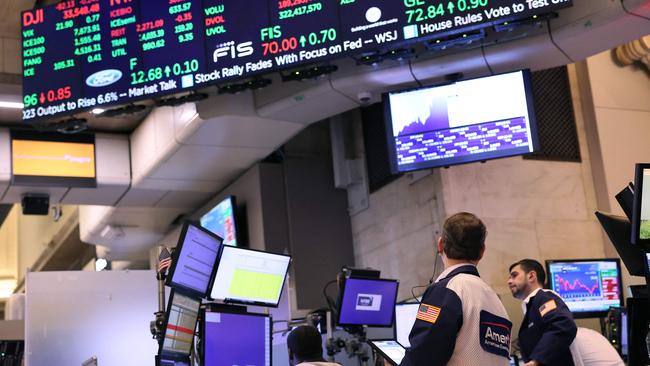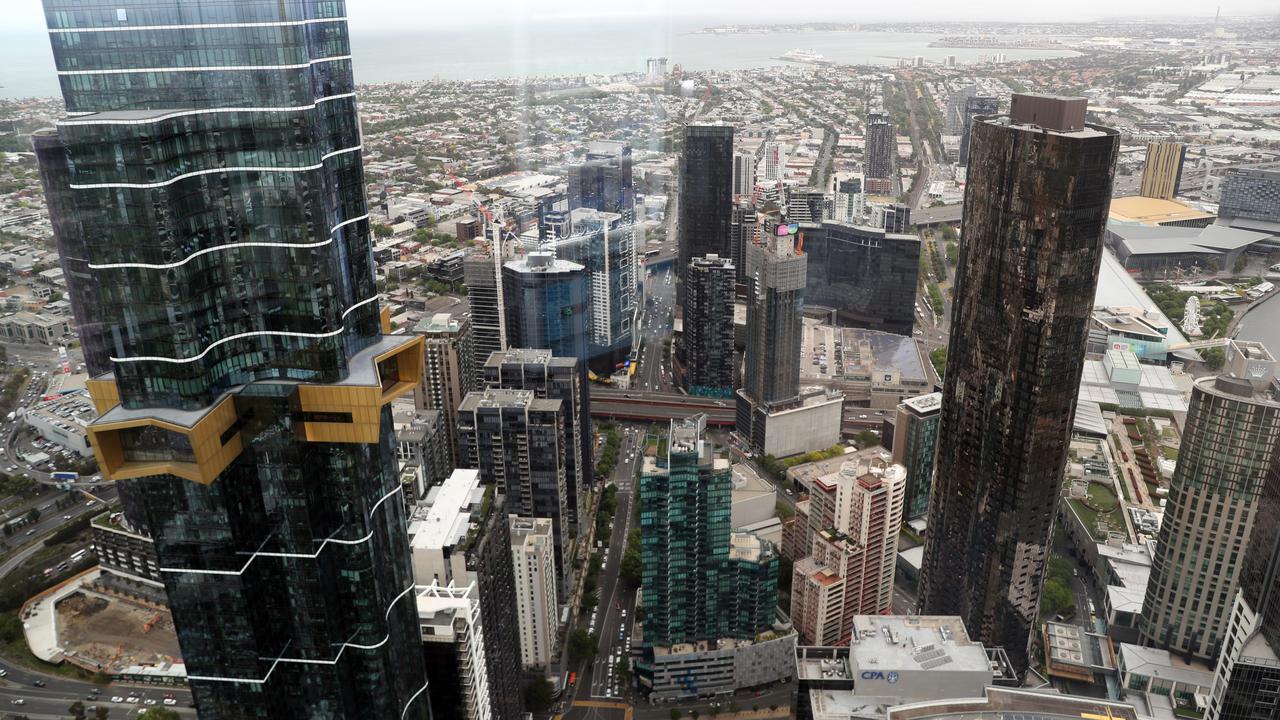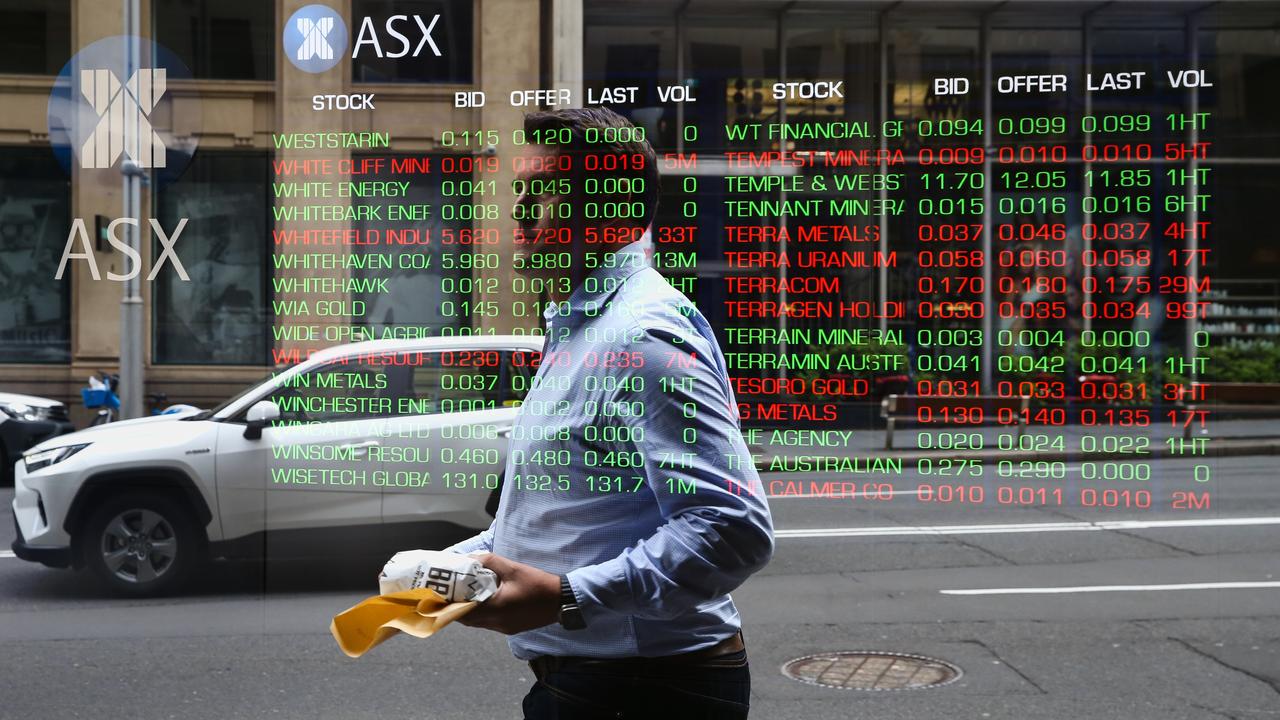JPMorgan strategist sees market similarities with the delayed rates hit of 2008
The economic resilience of the US is no reason to buy shares because the impact of higher interest rates is yet to play out, JPMorgan believes.

It’s a catchcry of the bulls, but the resilience of the US economy to the sharp lift in interest rates over the past 19 months is no reason to buy shares after the recent fall, according to JPMorgan.
By late July, the S&P 500 had risen 20 per cent for the year, after coming within 5 per cent of its record high set during the Covid-era boom of record low interest rates, albeit driven almost entirely by a handful of mega-cap tech stocks inspired by the AI boom.
The US sharemarket was seemingly ignoring the massive rise in interest rates since March 2022, although the S&P 500 equal weighted index rose only 10 per cent. It is currently flat for the year.
It fell as much as 8 per cent from its late July peak as the US 10-year bond yield soared from 3.87 to 4.64 per cent amid stronger than expected US economic data and an upward repricing of interest rate expectations, but the S&P 500 was still up more than 10 per cent for the year to date.
So far the consensus among sell-side analysts remains bullish and that in itself is a reason for caution. The median year-end estimate for the S&P 500 is 4435 points, almost 4 per cent above Wednesday’s close at 4274.51, with forecasts ranging from 3700 to 4900 points.
But while the S&P 500 is back within sight of his year-end target of 4200 points, JPMorgan’s Marko Kolanovic is sticking to his defensive view as he sees challenging macro fundamentals and headwinds for risky assets based on market valuations, investor positioning and various macro and geopolitical considerations which have arguably worsened this year.
His concern is primarily around the potential for a delayed impact from the massive lift in interest rates and similarities to the lead-up to 2008. In that regard he points to the rising rate of corporate bankruptcies and delinquencies in consumer loans on houses, credit cards and cars.
“We have heard a thesis that lags are now shorter and higher interest rates already affected the economy and market last year – we clearly disagree with this thesis,” Dr Kolanovic said.
“While we are not saying that the situation now is the same as in 2007-2008, there are enough similarities to warrant caution.”
The differences between 2008 and now are mostly in the exposure of economic segments to the interest rate rise, the leverage of different market segments, the size of rate increases, factors pointing to a different and likely longer time lag, as well as geopolitical and energy considerations.
But signs of stress are beginning to appear, according to the US bank’s chief market strategist.
“One should also keep in mind that going into a crisis, there is no clear idea of how it may evolve or about the specific narrative or catalysts,” he said.
For about two years going into the global financial crisis, there was a debate about whether the Fed could engineer a soft landing, so in his mind, the timing of any decisive macro outcome is “fairly uncertain”. It’s less than two years since the Fed started hiking in 2022.
“Right now, everybody knows that the 2008 financial crisis was about subprime real estate and exposure of banks like Lehman Brothers and Bear Stearns,” Dr Kolanovic said.
“What we find remarkable is that going into the crisis in 2007, investors were discussing the exact same topics as today: Fed pause, consumer resiliency, soft landing, strong jobs, etc.”
But in the past six months, the headwinds for risks are stronger, and tailwinds weaker, according to JPMorgan. Headwinds from quantitative tightening and interest rate hikes are stronger, with tightening conditions also in Europe and Japan. Geopolitical factors also deteriorated, with energy prices on the rise, the Ukraine war continuing, and China tensions increasing with trade restrictions.
Valuations are now also worse, according to JPMorgan, with an even larger gap between bond yields and equity yields and extreme concentration in a handful of large stocks, while tailwinds that were sustaining risk sentiment early this year are also weaker.
China’s reopening and the broader post-Covid pent-up demand for services was a big boost for European and Japan stocks and consumer services, but that has now turned into a slight headwind.
Positioning that was quite low at the end of last year is now above average.
Low levels of equity volatility, and by extension tight credit spreads, also contributed to overall positive sentiment, but Dr Kolanovic says that could change.
Consumers entered the tightening cycle with a very large cash cushion that is now being eroded.
A significant tailwind for the economy and markets this year was the high level of US fiscal spending. And while still supportive, it is now moderating, with the US deficit projected to decline from a very large more than 7 per cent of GDP last year to a more moderate 5.5 per cent next year. Dr Kolanovic also sees heightened volatility for equity markets after low volatility this year.
A “streak of calm” in the Cboe “VIX” volatility index in the US summer rally was a “technical aberration” that didn’t reflect macroeconomic fundamentals.
Dr Kolanovic doesn’t think AI can change the economy and offset the negative impact of inflation and interest rates.
“AI could boost the stockmarket in a speculative fashion like it did earlier this summer,” he notes. “Some of the wealth effect from high stockmarket valuations could also pass into the economy via broad consumer sentiment, which might have introduced additional lags, but that could equally quickly disappear.”
Medium term he remains negative and finds the risk-reward in equities and credit spreads “unattractive” relative to cash, and says this will likely remain the case as long as interest rates remain in deeply restrictive territory and the overhang of geopolitical risks persists.



